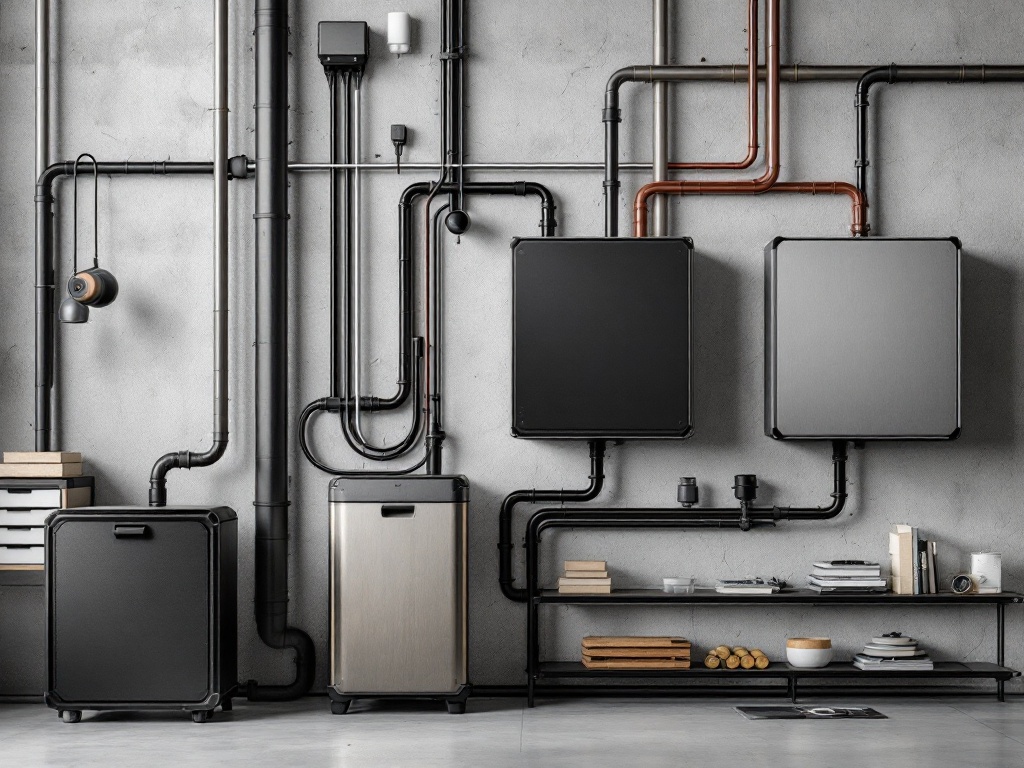
To be honest—no one wants their home to look like a jungle of tangled wires. You’ve spent hours picking the perfect paint color, arranging cozy furniture, and hanging artwork, only to have messy cables ruin the vibe. Maybe you’re trying to set up a sleek home office, or maybe you just want your living room TV setup to stop looking like a robot octopus took over. That’s where conduit boxes come in. These little helpers keep your wires organized and hidden, and guess what? They’re not just functional anymore. In 2025, they’re part of the design. In this guide, we’ll show you how to use conduit boxes in ways that match the latest trends—so your home stays stylish *and* functional. By the end, you’ll know exactly how to tackle those eyesore wires and maybe even have fun doing it. Let’s get started!
Why Conduit Boxes Are Your New Best Friend
Think of conduit boxes like the “invisible hands” of your home’s electrical system. They’re the boxes or tubes that hide and protect wires, keeping everything safe and tidy. Remember when your phone charger got chewed up by the dog? A conduit box could’ve saved it. But today, they’re not just about safety. With open-concept homes and minimalist designs trending, people want their spaces to look clean. Imagine your friend Jamie’s apartment—you know, the one with the Pinterest-worthy kitchen? They probably used conduit boxes to hide wires under the countertop lights. At HomeCrt, we’ve seen clients use them behind floating shelves, under stairs, or even along baseboards to keep tech setups seamless.
Making Conduit Boxes Part of Your Design
Here’s the cool part: conduit boxes don’t have to be boring. Paint them the same color as your walls so they blend in, or go bold and make them a feature. For example, if you’re into industrial style, try metal conduit pipes exposed along a brick wall—it adds that raw, edgy look everyone’s obsessed with. Or, if you’re setting up a home theater, use flat, low-profile boxes behind the TV so nothing distracts from the movie night vibe. Pro tip: check out Bob Vila’s guide for creative ways to integrate conduits into DIY projects. We helped a client in Austin last month hide smart-home wiring inside a faux wooden beam—it looked so natural, guests thought it was part of the original architecture!
Picking the Right Conduit Box for Your Space
Not all conduit boxes are the same. Plastic ones are great for damp areas (like under the kitchen sink), while metal works better for high-traffic spots where durability matters. Size matters too—too big, and it’ll stick out; too small, and you’ll struggle to fit all the wires. Let’s say you’re wiring a home office. Measure your cables (don’t forget the HDMI and charger cords!), add a little extra space for future gadgets, and pick a box that fits snugly against the wall. HomeCrt’s team always recommends labeling wires inside the box. Trust me, your future self will thank you when you need to fix something quickly.
DIY vs. Calling the Pros
Okay, time to get real. Some conduit projects are easy. Hiding a single lamp cord? Grab a $10 plastic box from the hardware store, stick it on the wall, and you’re done. But if you’re dealing with complex setups—like wiring a whole-home sound system or outdoor lighting—it’s worth calling an electrician. Safety first! For example, if you’re renovating an older home in San Antonio (hey, local shoutout!), those vintage walls might have quirks that make DIY tricky. We partnered with HGTV’s renovation experts last year and learned one golden rule: when in doubt, ask. Even small mistakes can lead to big headaches (or worse, fire hazards).
So there you have it—conduit boxes aren’t just for electricians anymore. They’re a secret weapon for keeping your home looking sharp while handling all the tech we can’t live without. Whether you’re hiding Alexa’s cords or prepping for a full smart-home upgrade, these tips should help you stay ahead of the design curve. And hey, if you ever feel stuck, HomeCrt’s blog has tons of free guides (no sales pitch, promise!). Now go tackle those wires and make your space the envy of your next Zoom meeting.





